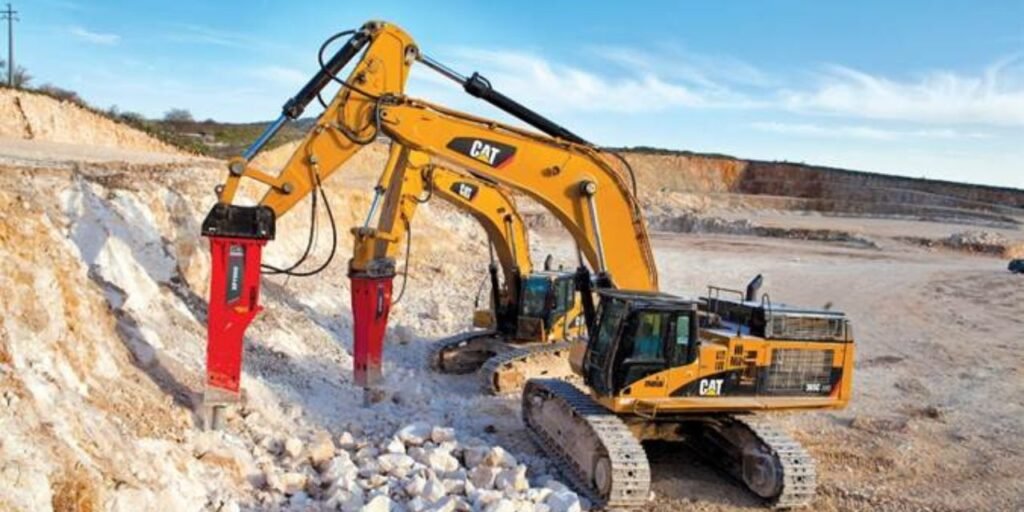
Overview of the Market:
The global hydraulic hammer market, which was estimated to be worth US$1.2 billion in 2022, is expected to develop rapidly, with sales expected to reach US$2.1 billion by 2033 at a compound annual growth rate (CAGR) of 5.6%.
The continuous modernisation and infrastructure expansion in the global construction sector are the main causes of the spike in demand for the hydraulic hammer market. These hammers are essential instruments for infrastructure development and restoration projects since they are used extensively in construction tasks including excavation and demolition.
According to a study by Persistence Market Research, end-use industries’ safety concerns about the usage of heavy machinery like hydraulic hammers have significantly increased recently. The advantages provided by hydraulic hammers have greatly simplified operations, even in the face of obstacles like labour and time limits. One of the main factors driving their demand across different sectors and geographical locations is their exceptional operating efficiency.
Important reasons for market growth:
Infrastructure Development: One of the main factors driving the rise in demand for hydraulic hammers is the continuous modernisation and development of infrastructure projects across the world, including the creation of buildings, bridges, roads, and other structures. These hammers are vital equipment for infrastructure projects as they are used extensively in excavation, demolition, and building.
Construction Industry Growth: The need for hydraulic hammers is increasing as a result of the construction industry’s expansion, especially in emerging nations. The need for dependable and effective machinery, such as hydraulic hammers, is being driven by population expansion, urbanisation, and rising investment in building projects.
Renovation and Reconstruction: Hydraulic hammers are crucial for tearing down ageing buildings and making room for new development when current infrastructure ages and has to be renovated or rebuilt. The need for hydraulic hammers is further fuelled by the necessity for infrastructure rehabilitation and upgrading in industrialised nations.
Operational Efficiency: When it comes to excavation and demolition, hydraulic hammers are more efficient than conventional techniques. Their widespread use is fuelled by their capacity to deliver accurate and potent blows with the least amount of time and physical labour, which boosts output and lowers project costs overall.
Market limitations and difficulties:
High Initial Investment: Purchasing hydraulic hammers can come with a hefty upfront cost, particularly for contractors or small and medium-sized businesses (SMEs) with little funding. Some prospective purchasers could be discouraged from purchasing hydraulic hammer equipment due to the substantial initial outlay.
Maintenance Costs: To guarantee optimum performance and lifespan, hydraulic hammers need to be maintained on a regular basis. Over time, maintenance expenses, such as regular service, part replacement, and repairs, can mount up and affect end users’ total cost of ownership.
Tough Competition: There are many suppliers and manufacturers fighting for market share in the fiercely competitive hydraulic hammer industry. Price wars, shrinking profit margins, and heightened need to develop and distinguish products in order to keep a competitive advantage are all consequences of intense competition.
Regulatory Compliance: The design and production of hydraulic hammers are made more difficult by the need to adhere to strict safety and environmental laws. To make sure their goods satisfy regulatory standards, manufacturers must spend money on research and development, which can lengthen the time to market and raise manufacturing costs.
Leading Trends:
Technological Developments: As hydraulic hammer technology continues to advance, more effective, robust, and adaptable devices are being created. To improve efficiency, productivity, and user experience, manufacturers are using cutting-edge technologies like telematics, intelligent control systems, and hybrid power sources.
Eco-Friendly Solutions: The need for environmentally friendly hydraulic hammer solutions has grown as a result of the construction industry’s rising emphasis on sustainability and environmental responsibility. In order to minimise their influence on the environment and adhere to strict rules, manufacturers are creating hammers with improved energy efficiency, decreased noise emissions, and reduced fuel usage.
Electrification and Hybridisation: The demand for cleaner and more environmentally friendly substitutes for conventional diesel-powered gear is driving a trend towards the electrification and hybridisation of construction equipment. In an effort to lower carbon emissions, increase energy efficiency, and satisfy changing environmental regulations, manufacturers are investigating electric and hybrid hydraulic hammer designs. Telematics and Remote Monitoring: By integrating these technologies with hydraulic hammers, it is possible to track operating data, maintenance requirements, and equipment performance in real time. Through proactive maintenance and data-driven decision-making, this trend enables construction organisations to maximise fleet management, reduce downtime, and improve overall operational efficiency.
Customisation and Modular Design: The trend towards customisation and modular design in hydraulic hammers is being driven by the growing need for application-specific setups and customised solutions. Many attachments, tools, and accessories are available from manufacturers that are simple to swap out or modify to fit various equipment kinds, industries, and task needs.
